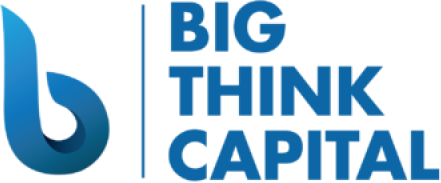Understanding the Impact of Fluctuating Fed Interest Rates on Your Small Business Loan
Estimated Reading Time: 5 minutes
- Be Proactive: Regularly assess your financing options and stay ahead of interest rate hikes by locking in favorable terms.
- Develop a Financial Contingency Plan: Having an emergency fund and a clear refinancing strategy can protect your business from the financial pressures of rising borrowing costs.
- Leverage Technology: Embrace modern cash flow management tools to optimize your financial decision-making and stay adaptable in uncertain markets.
Table of Contents
- How Rate Decisions at the Federal Reserve Affect Small Business Loans
- Strategies for Managing a Fluctuating Rate Environment
- Practical Examples of Successful Adaptation
- Conclusion
- FAQ
How Rate Decisions at the Federal Reserve Affect Small Business Loans
The Federal Reserve, as the central bank of the United States, plays a pivotal role in shaping monetary policy. Its decisions regarding interest rates directly influence the broader economy, including the cost of borrowing for small businesses. When the Fed raises rates, borrowing costs typically increase, which can have multiple implications for businesses:
- Higher Loan Costs: As interest rates climb, lenders raise the cost of financing. This results in higher monthly payments on loans and advances, which could strain cash flow.
- Decreased Borrowing Capacity: With higher rates, some business owners may find it more challenging to qualify for loans, as lenders evaluate risk based on prevailing rates.
- Impact on Cash Flow Management: Increased loan repayments can limit cash flow, causing businesses to reconsider their operational budgets and financial strategies.
Source: Federal Reserve Economic Data – FRED.
Strategies for Managing a Fluctuating Rate Environment
Adapting to the changing landscape of interest rates requires a proactive approach. Here are several strategies to help you navigate these fluctuations:
1. Evaluate and Adapt Financing Options
Understanding the various financing products available can help your business adapt to changing interest rates. Options such as working capital advances, equipment financing, merchant cash advances, and lines of credit each have unique implications in a fluctuating environment. Here’s how they can work for you:
- Working Capital Advances: These can be beneficial for immediate operational needs. Often, they provide flexible repayment terms, allowing you to mitigate higher rates in the short term.
- Equipment Financing: If you’re considering an equipment purchase, locking in financing now could save you money if rates rise later.
- Lines of Credit: These offer flexibility as you only pay interest on the amount drawn, which can be advantageous if rates fluctuate.
2. Build a Contingency Plan
Creating a financial safety net is paramount. Your contingency plan could include:
- Emergency Funds: Establish a reserve that can cover at least three to six months of operating expenses to cushion against sudden increases in costs.
- Refinancing Options: Keep an eye on rates. If market conditions change favorably, consider refinancing existing loans to lower rates, improving payment terms.
- Credit Analysis: Regularly assess your credit profile. A good credit score may position you for more favorable rates, even when Fed rates rise.
3. Strengthen Banking Relationships
Maintaining strong relationships with your lenders can lead to better financing conditions. Strategies include:
- Communication: Regularly engage your banker to discuss your business progress and financial needs. Staying top of mind can often result in more personalized service and favorable terms.
- Feedback Loop: Share insights about market conditions and how your business is performing, which can reinforce your credibility.
- Negotiation: When seeking financing, leverage your relationship to negotiate better terms. A trusted borrower can receive more favorable considerations.
4. Utilize Digital Cash Flow Management Tools
Investing in technology to monitor and manage cash flow can significantly boost your financial decision-making. Consider platforms that offer:
- Real-Time Monitoring: Use tools to track your income and expenses in real time, which helps identify cash flow surpluses or deficits promptly.
- Predictive Analytics: Some platforms allow for forecasting based on historical trends and future projections, enabling better financial planning.
- Automated Alerts: Set up alerts for when cash dips below a certain threshold, allowing you to act swiftly to mitigate issues.
Practical Examples of Successful Adaptation
To spotlight the effectiveness of these strategies, let’s look at a couple of small businesses that successfully navigated the fluctuating interest rates environment.
Case Study 1: Local Restaurant Chain
A local restaurant chain faced a cash flow crunch when rates began to rise. They restructured their existing debt by consolidating high-interest loans into a line of credit with a lower interest rate. This not only lowered their payments but provided them with the flexibility to manage variable cash flow more effectively.
Case Study 2: Construction Company
A small construction firm anticipated rising equipment financing rates. They decided to purchase essential machinery ahead of the Fed’s rate hike announcements, securing fixed financing terms that saved them thousands over the equipment’s lifespan.
Conclusion
Navigating the complexities of fluctuating Fed interest rates can be challenging for small businesses. However, with the right strategies and a proactive approach, you can minimize risks and leverage opportunities, ensuring your business continues to thrive no matter the economic climate.
At Big Think Capital, we understand the unique challenges faced by small businesses concerning financing in a fluctuating interest rate environment. Contact us to speak with a funding expert about how we can help you secure the best products for your business needs and navigate these financial waters with confidence.
Visit us at bigthinkcapital.com to learn more about our services and how we can assist you in achieving your business goals.
FAQ
What are Fed interest rates?
Federal interest rates are the rates at which banks lend reserve balances to other depository institutions overnight. They are a tool used by the Federal Reserve to influence the economy by adjusting borrowing costs.
How do Fed rate changes affect business loans?
When the Fed raises rates, the cost of borrowing increases, leading to higher interest rates on business loans, which can affect a business’s cash flow and borrowing capacity.
What steps can businesses take to mitigate interest rate risks?
Businesses can evaluate and adapt their financing options, build a contingency plan, strengthen banking relationships, and utilize digital cash flow management tools.






